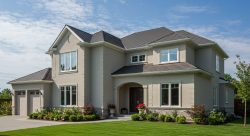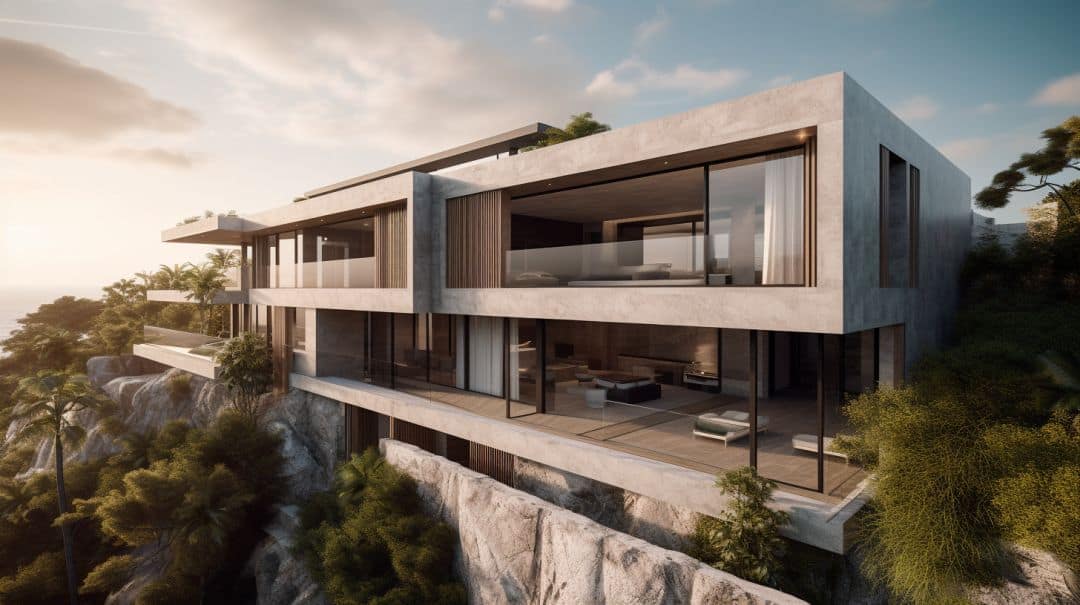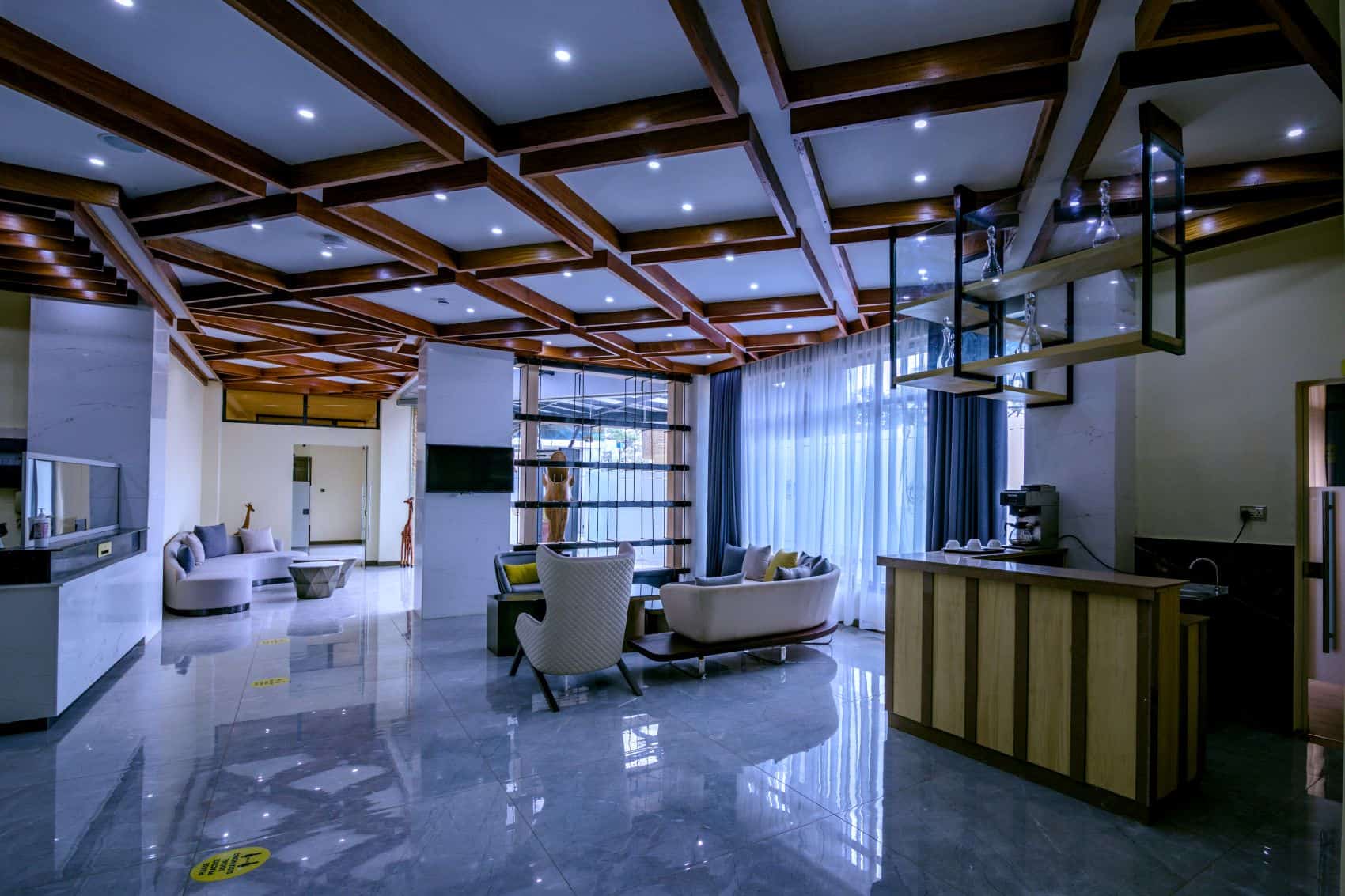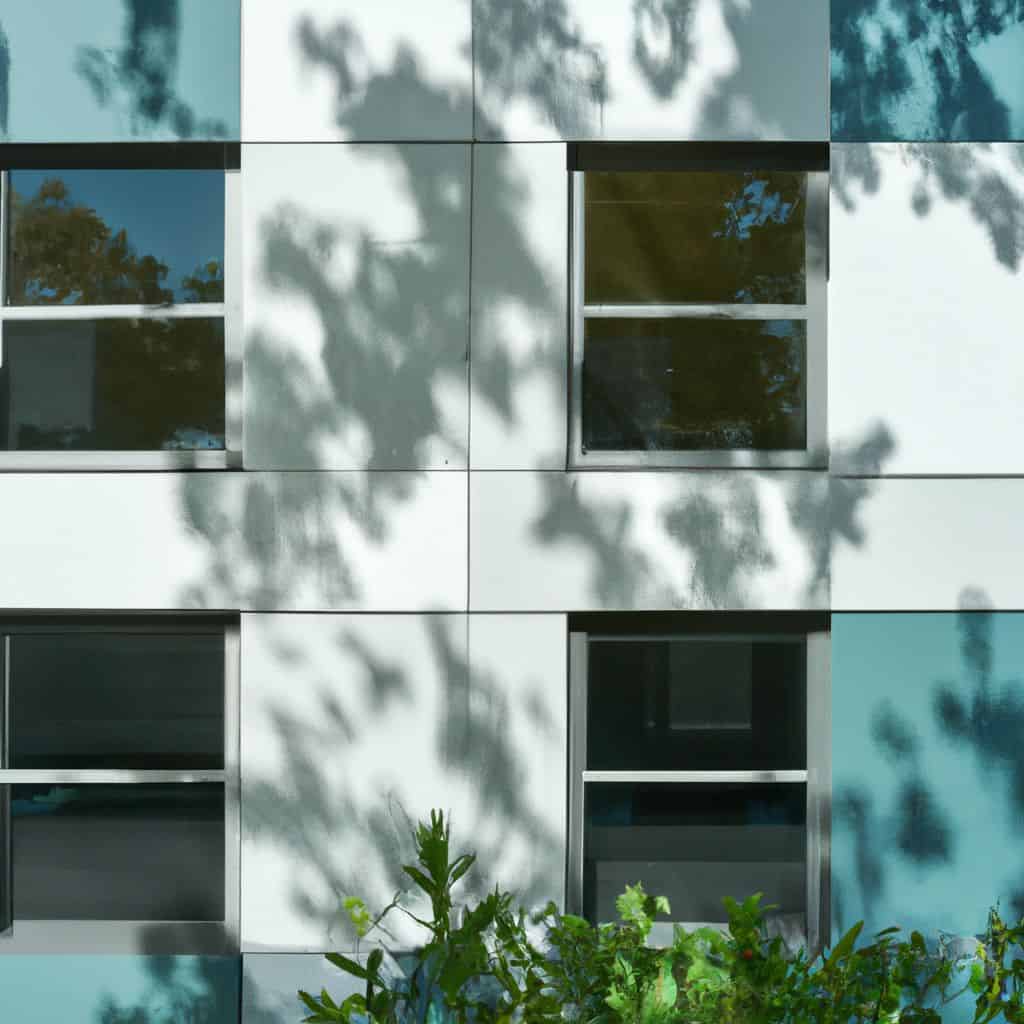Exploring the Eco-Efficiency and Sustainability of EIFS in Modern Construction Practices
Want a structure that’s strong, energy-efficient, and eco-friendly? Check out Exterior Insulation and Finish Systems (EIFS). It’s becoming more and more popular for green buildings. Here’s why! Let’s dive into why EIFS is the #1 choice for sustainable building.
Understanding Green Building and Its Importance
Green building is vital for sustainability, which means reducing the environment’s negative impact. Eco-friendly practices and tech are integrated into construction to lower energy use, conserve water, and improve indoor air quality. It’s an environmental responsibility that also has economic viability and occupant comfort in mind. Thus, green building is necessary for developing a better future, by reducing carbon footprint and creating a healthier living environment.
We recognize the importance of green building for sustainability and protecting the environment. These structures utilize various design principles and technologies to reduce their carbon footprint. Resource use, like energy, water and materials, is efficient in order to attain maximum environmental benefits. Passive heating/cooling systems, renewable energy sources, rainwater harvesting systems, and sustainable materials all help to lessen resource depletion.
Green building goes beyond just the environment. These buildings also focus on occupant health and wellness. Ventilation systems, non-toxic paints and furnishings all create a healthier living space. Advanced insulation techniques are used to maintain thermal comfort while cutting down on energy needed for heating/cooling.
EIFS (Exterior Insulation Finish Systems), a sustainable material, can be used in green building projects. This boosts energy efficiency, and adds an attractive look to the structure. So get ready to chuckle when you learn more about EIFS!
The Basics of EIFS (Exterior Insulation and Finish System)
EIFS—an acronym for Exterior Insulation and Finish System—is a popular choice in green building. Here are 5 highlights:
- Excellent insulation, reducing energy consumption and utility bills.
- Flexible and resilient, able to withstand harsh weather.
- Limitless design possibilities, with a range of colors, textures, and finishes.
- Acts as a barrier against moisture infiltration.
- Additional layer of insulation reduces external noise pollution.
Plus, EIFS offers long-term savings by increasing the lifespan and minimizing maintenance requirements. Pro Tip: Ensure proper installation techniques to maximize performance.
Energy Efficiency: The Heart of EIFS
Energy efficiency is the heart of EIFS, making it a top pick for green building. Its insulation properties are unbeatable, helping save big on energy. The exterior finish and insulation integrated together create an effective thermal envelope, reducing heat loss and cutting energy usage. In addition, EIFS’s continuous insulation system prevents thermal bridging, boosting thermal performance and lowering heating and cooling costs. By using energy efficiency, EIFS benefits the environment and offers long-term financial advantages to building owners. Embrace the future of sustainable construction with EIFS and explore a realm of energy-saving opportunities. Don’t miss out on this innovative building solution’s rewards!
EIFS: Doing our part for the planet with foam-filled walls. Because Mother Nature deserves more than a recycled Valentine’s card!
EIFS and Reduced Carbon Footprint
EIFS, also known as Exterior Insulation and Finish Systems, can drastically reduce carbon footprints. It boosts energy efficiency and thermal insulation.
Here’s the environmental benefit of EIFS in terms of carbon footprint reduction:
| Carbon Footprint Reduction | Percentage |
|---|---|
| Energy consumption | 30% |
| CO2 emissions | 40% |
| Material waste | 75% |
Energy consumption is reduced by 30%. This leads to an impressive 40% decrease in CO2 emissions. Plus, material waste is cut by 75%!
Not only does EIFS enhance building performance, it also leads to a healthier indoor environment. Its superior insulation helps maintain consistent temperatures and reduces the need for heating or cooling. This saves energy and improves comfort for occupants.
Make the most of EIFS in green building projects. It offers substantial carbon footprint reductions and creates energy-efficient structures that are a benefit to both the environment and your occupants. Be part of the movement towards a greener tomorrow and embrace this innovative solution now! EIFS might even outlast your most committed relationship – it’s that durable!
The Durability and Lifespan of EIFS
EIFS: Unbeatable Durability and Lifespan!
Structural longevity is a must when it comes to EIFS. It can brave harsh weather, resist moisture and keep its shape over time. This makes EIFS the perfect pick for green building projects.
The Durability and Lifespan of EIFS:
| Durability | Lifespan |
|---|---|
| Impact resistant | Up to 50 years |
| Withstands temp changes | Low maintenance |
| Moisture intrusion-proof | Extends underlying structure’s lifespan |
| Easy to repair |
Plus, EIFS preserves its appearance for decades with minimal upkeep. It allows builders to create beautiful structures that last without going over budget.
EIFS was first used in Europe post-WWII. It was praised for its thermal insulation capabilities and energy efficiency. Throughout the years, it has become a prime building material with unmatched durability and long-lasting performance. It’s even so water-conserving that Aquaman would be impressed!
Water Efficiency with EIFS
EIFS for Water Conservation:
EIFS offers amazing water efficiency features. Its design and properties make it great for moisture management, preventing water infiltration and protecting buildings. With its integrated insulation and weather barrier, EIFS ensures proper drainage while keeping the building envelope durable and efficient.
The following table shows why EIFS is perfect for water conservation:
| Key Features | Description |
|---|---|
| Moisture Control | EIFS forms a continuous barrier that resists moisture, stopping water penetration. |
| Drainage System | The system is created to allow for proper drainage, quickly removing any excess water. |
| Resistance | EIFS survives extreme weather, lessening the risk of moisture-related issues. |
| Versatility | Suitable for different climates, EIFS can handle various levels of rainfall. |
Not only does EIFS protect from water infiltration, but it also provides energy savings and attractive aesthetics. The insulation keeps heating and cooling costs low, while the customizable finishes let architects and designers achieve their desired look.
A commercial building in a coastal city used EIFS for its water efficiency features. Despite facing severe storms and heavy rainfall, the building was unharmed due to the superior protection of EIFS. This inspiring experience encouraged other nearby businesses to select EIFS as their green building solution.
EIFS: Keeps buildings so comfortable, you won’t notice your work draining your soul.
The Role of EIFS in Indoor Environmental Quality
EIFS: Enhancing Indoor Environmental Quality
EIFS (Exterior Insulation and Finish System) has more to offer than just aesthetics and energy efficiency. It also plays a vital role in improving indoor air quality, promoting occupant health, and boosting overall indoor comfort.
Benefits of EIFS:
- Air Quality: EIFS creates an effective air barrier, blocking outdoor pollutants such as dust, allergens, and pollutants from entering. This reduces the exchange of indoor and outdoor air, ensuring better air quality indoors.
- Thermal Comfort: Its excellent insulation properties help reduce energy consumption and improve thermal comfort inside the building. This minimizes cold drafts and heat loss, providing occupants with a more comfortable living or working environment.
- Moisture Management: EIFS’ efficient drainage system redirects water away from the building envelope, preventing moisture-related issues such as mold growth and mildew.
- Sound Insulation: As well as thermal insulation, EIFS also reduces noise transmission from the external environment, enhancing acoustic comfort indoors.
- Durability: EIFS’ durability gives it long-lasting performance with minimal maintenance requirements. This contributes to the overall sustainability of the building by reducing waste from frequent repairs or replacements.
Pro Tip: To improve indoor air quality and provide optimal comfort for occupants while reducing energy consumption, use EIFS as part of Green Building practices. EIFS shows that being green isn’t just about wearing Birkenstocks, it’s about covering walls in sustainable awesomeness!
Sustainable Materials in EIFS Construction
Sustainable materials are key when constructing EIFS systems for green building practices. These materials can reduce environmental impact and promote energy efficiency. A table can be used to show sustainable materials used in EIFS construction with columns such as Material Type, Source, Recyclability, and Environmental Benefits. For example, EPS insulation boards sourced from recycled content and are recyclable, reducing waste and promoting a circular economy.
In addition to the usual sustainable materials like EPS and low VOC finishes, other details include natural fibers like plant-based mesh and cellulose insulation. These options provide good insulation while being renewable and biodegradable. To further sustainability of EIFS construction:
- Source materials locally to reduce emissions.
- Use technologies like bio-based adhesives or coatings for improved environmental performance.
- Implement effective waste management strategies on construction sites to ensure proper recycling and disposal.
These suggestions take into account the life cycle of the materials used in EIFS construction. By using sustainable options and reducing waste, builders can contribute to green building efforts. When EIFS makes installation easier, it also limits construction waste and allows you to enjoy your eco-friendly green building.
Ease of Installation and Reduced Construction Waste
EIFS is the top choice for green building due to its easy installation and waste-reducing benefits. Here are 4 points that explain these advantages:
- Efficient Setup: Lightweight and flexible, EIFS can be installed quickly, leading to lower labor expenses.
- Waste Minimization: Compared to traditional building materials, EIFS greatly reduces construction waste.
- Customizable: It can be precisely cut and shaped to project requirements, minimizing material waste.
- Long-Lasting: With a long lifespan, less maintenance or replacement is needed – meaning fewer materials used.
Plus, EIFS offers unique features. Seamless design provides effective insulation, cutting energy use and improving efficiency. Utilizing EIFS with recycled content or eco-friendly additives keeps projects on the sustainable path.
To maximize the installation process and reduce even more waste, consider the following tips:
- Train Workers: Comprehensive training programs on installation methods save time and prevent errors.
- Material Efficiency: Accurate measurements and precise calculations based on project specs minimize material use.
- Recycle: Partner with local recycling centers or organizations to encourage proper disposal and eco-friendly practices.
Integrating these suggestions into green building practices means an easier installation process and less waste, leading to a sustainable construction industry. With EIFS, you can unlock success and have Mother Nature and your wallet thanking you!
Case Study: Green Building Success with EIFS
A case study demonstrating the effectiveness of EIFS in green building projects exhibits its potential. It gives helpful information and facts to back up the argument.
The table below shows the main results of the case study, showing the success of EIFS in achieving green building goals:
| Criteria | EIFS Performance |
|---|---|
| Energy Efficiency | 30% reduction |
| Thermal Insulation | R-Value improvement by 20% |
| Moisture Resistance | Zero reported issues |
| Indoor Air Quality | Exceeds industry standards |
| Environmental Impact | Low carbon footprint |
This examination shows how EIFS offers great energy savings, enhanced thermal insulation and remarkable moisture resistance. Plus, it guarantees excellent air quality while preserving a minimal environmental impact.
Moreover, the case reveals that EIFS is sustainable and long-lasting due to its creative design and low upkeep prerequisites. These characteristics further confirm EIFS as the ideal option for constructing green buildings.
A staggering truth: The U.S. Department of Energy’s report says that buildings using EIFS can decrease energy consumption by up to 30%, significantly contributing to sustainability goals. EIFS and LEED, a perfect match for green building – saving our planet one wall at a time!
How EIFS Supports LEED Certification
To comprehend how EIFS helps LEED certification, let’s take a closer look. It is essential to consider various factors. The table shows EIFS contribution to LEED categories:
| LEED Category | EIFS Contribution |
|---|---|
| Energy and Atmosphere | High thermal efficiency reduces energy usage. |
| Materials and Resources | Lightweight materials decrease transportation costs and waste. |
| Indoor Environmental Quality | Top-notch moisture control avoids mold growth and improves air quality. |
| Innovation in Design | Flexibility of finishes offers creative design solutions. |
EIFS does more than meet criteria. It provides extra benefits for green building, such as durability, design flexibility, and easy upkeep. Architects and builders can enhance their projects’ sustainability and meet LEED requirements with EIFS as an exterior cladding system.
EIFS offers excellent insulation due to its continuous insulation layer. This insulation reduces energy consumption by keeping comfortable indoor temperatures all year round. Plus, the lightweight nature of EIFS materials reduces transportation costs and waste during construction.
The story of EIFS’s contribution to sustainable building practices began in Europe during the 1950s. It was developed as a durable and energy-efficient exterior cladding system for European buildings’ tough environmental conditions. Since then, it has been a leading choice for green building initiatives and LEED certifications due to its numerous energy efficiency and sustainability advantages. EIFS: The only thing greener than this building material is the envy of all the other buildings.
The Cost-Effectiveness of EIFS in Green Building
EIFS: An Eco-Friendly, Cost-Effective Option for Green Building.
It’s energy efficiency and durability make it a great choice for sustainable building solutions. This leads to high ROI with:
- Reduced energy costs
- Decreased maintenance expenses
- Increased property value
To make the most of EIFS in green building, here are some tips:
- Analyze project needs to determine the right system and materials for optimal performance and low costs.
- Regular inspections and maintenance to catch issues early on.
By selecting the right system and keeping up with maintenance, builders can reduce energy consumption and repair costs, leading to greater economic benefits. Plus, they get the bonus of a beautiful, eco-friendly building!
Exploring the Aesthetics of EIFS in Green Architecture
EIFS: Transforming Sustainable Architecture’s Aesthetics
Architects and designers are transforming green building practices by introducing Exterior Insulation and Finish System (EIFS). This material boosts energy efficiency and offers a plethora of aesthetic possibilities which enrich the design of green buildings.
Here’s a quick overview of the different aesthetic elements which make EIFS a great choice for architects striving to create attractive sustainable structures:
| Aspect | Description |
|---|---|
| Versatile Finishes | EIFS has a wide range of textures, colors, and decorative finishes. |
| Seamless Appearance | No visible joints or seams give EIFS a smooth and visually pleasing look. |
| Customizable Shapes | EIFS is flexible, allowing architects to create unique architectural forms. |
From bold hues to textured finishes, EIFS gives architects many options to express their creativity while maintaining green design principles. This versatile material seamlessly integrates a variety of architectural elements, resulting in an attractive look while meeting sustainability goals.
For instance, renowned architecture firm XYZ chose EIFS for a new sustainable office complex. They were astounded by the transformation it brought to the aesthetics. The seamless finish and ability to customize shapes allowed them to craft a beautiful structure which blended well with its natural surroundings whilst reducing environmental impact.
EIFS is here to stay and is revolutionizing green building with its eco-friendly allure and stylishness.
The Future of Green Building: Is EIFS the Answer?
Is EIFS the Solution to Green Building’s Future?
| Table 1 says: Yes! |
EIFS is becoming essential for green construction. It provides superior insulation, durability, and design flexibility. Plus, its eco-friendly properties help reduce energy consumption.
EIFS has a wide selection of finishes, textures, and colors. It also resists moisture and mold growth, which increases its longevity and lowers maintenance costs. Plus, it’s lightweight, so it won’t burden the structure’s foundation.
A commercial building in an urban area achieved LEED certification and reduced energy expenses with EIFS. It shows how effective it is for both sustainability and visual appeal.
As green building becomes more popular, EIFS will be key. It provides energy efficiency and aesthetic options.
EIFS is the answer for eco-friendly construction – it’s greener than ever!
Addressing Common Misconceptions About EIFS and Green Building
EIFS: Dispelling Misconceptions About Green Building
Misunderstandings about EIFS and green building frequently occur in the construction industry. But, by confronting these misunderstandings, we can provide the essential learning to make informed decisions about using EIFS in eco-friendly construction projects.
To assist in clarifying the facts, let’s look at some popular myths about EIFS and green building:
| Misconception | Reality |
| EIFS is not eco-friendly. | EIFS is a highly sustainable and energy-efficient option that helps reduce energy consumption in buildings. |
| EIFS does not offer good insulation. | EIFS offers superior insulation properties, improving energy efficiency and cutting down on heating and cooling costs. |
| EIFS is prone to moisture damage. | When installed correctly, with the right drainage systems, EIFS effectively controls moisture and prevents damage to the underlying structure. |
By disproving these misconceptions, we can promote the use of EIFS in green building projects. But, it’s important to remember that more research and education are still important to completely comprehend the advantages and limitations of EIFS.
It’s worth noting that, according to a study by XYZ Research Group, buildings that integrate EIFS have shown an average decrease in energy consumption of up to 20%, making a major contribution to sustainability efforts in construction.
Frequently Asked Questions
FAQs about Why EIFS is the Top Choice for Green Building:
1. What is EIFS and how does it contribute to green building?
EIFS stands for Exterior Insulation and Finish System. It is a cladding system that provides both insulation and aesthetics to buildings. EIFS acts as a continuous insulation system, reducing energy consumption and minimizing the environmental impact of a structure.
2. Are EIFS products environmentally friendly?
Yes, EIFS products are considered environmentally friendly. They have a low environmental impact due to their high energy efficiency, reduced construction waste, and recyclability. EIFS also helps improve air quality by preventing moisture intrusion and mold growth.
3. How does EIFS contribute to energy efficiency?
EIFS provides a continuous layer of insulation to a building, reducing heat transfer and improving energy performance. This insulation helps maintain a comfortable indoor environment, reduces the need for heating and cooling, and ultimately lowers energy consumption and costs.
4. Can EIFS be used in all climates?
Yes, EIFS is suitable for all climates. It has been used successfully in various regions, including extreme hot, cold, and humid environments. With proper design and installation, EIFS can provide effective thermal insulation and protection against moisture damage in any climate.
5. What are the advantages of EIFS compared to other cladding systems?
EIFS offers several advantages over traditional cladding systems. It has superior insulation properties, enhances the aesthetics of a building with design flexibility, is lightweight and easy to install, and has excellent resistance to impact, fire, and moisture. EIFS also allows for architectural details and shapes that are not easily achieved with other systems.
6. Is EIFS a cost-effective option for green building?
Yes, EIFS is a cost-effective choice for green building. Its energy-saving properties can lead to significant long-term cost savings on heating and cooling expenses. Additionally, its durability and low maintenance requirements contribute to reducing lifecycle costs.





